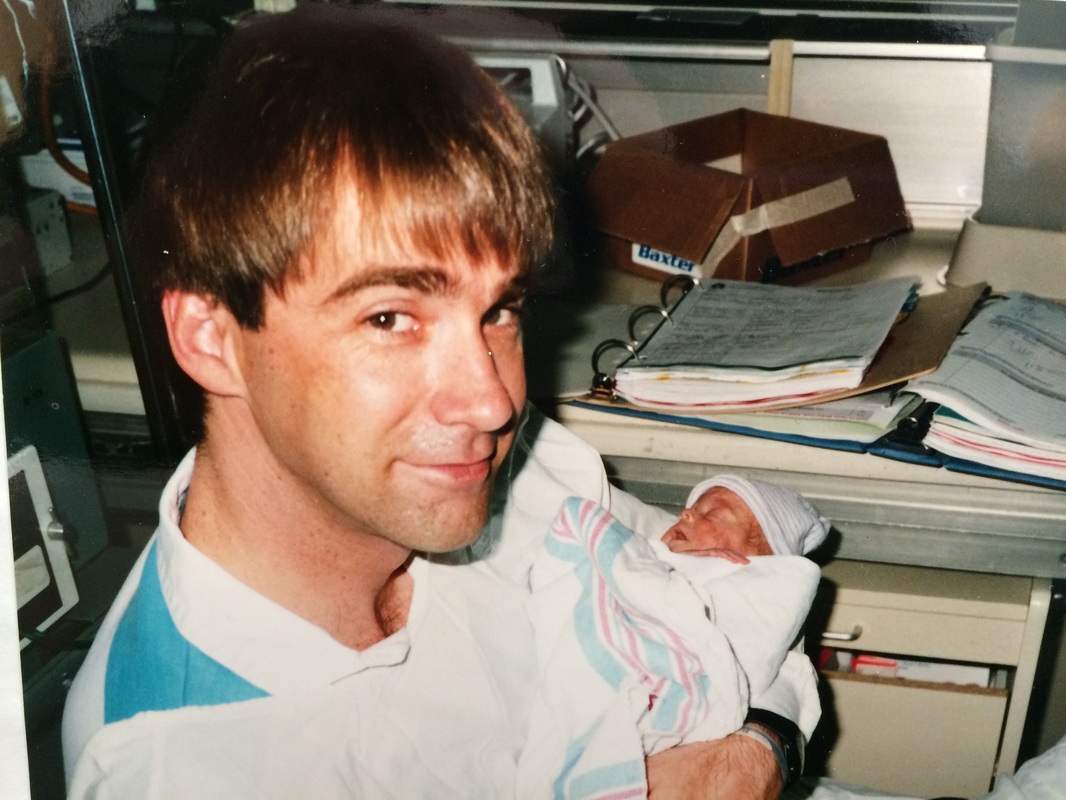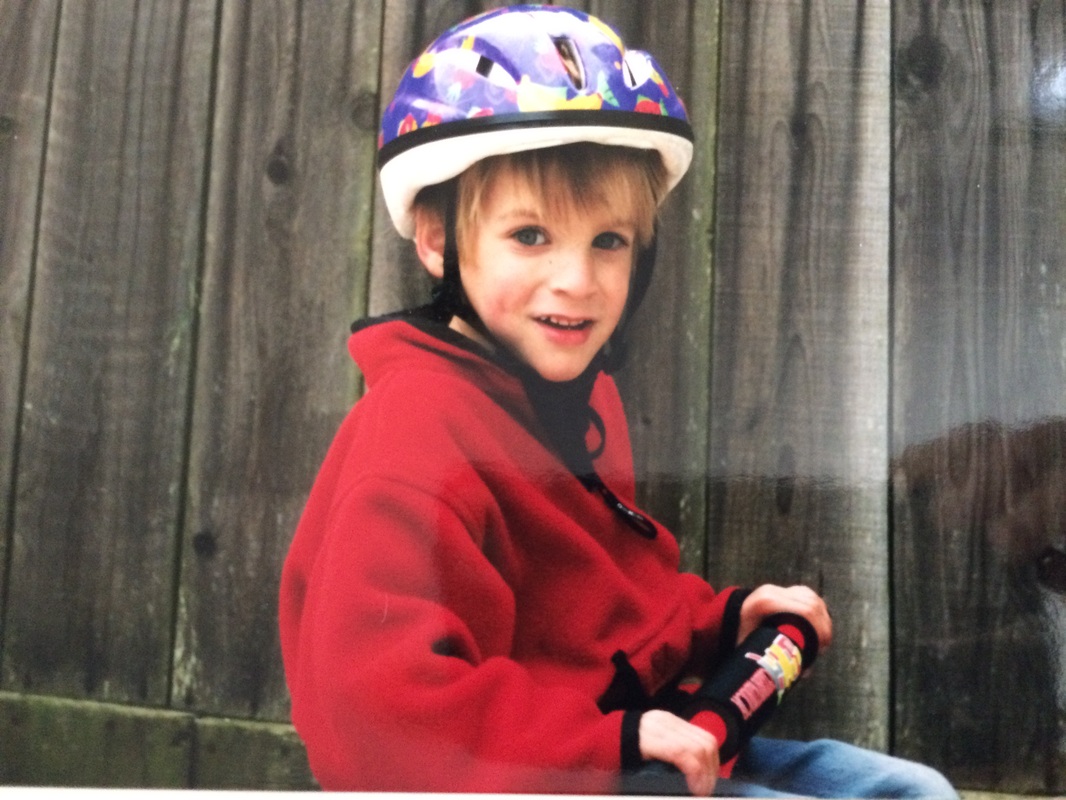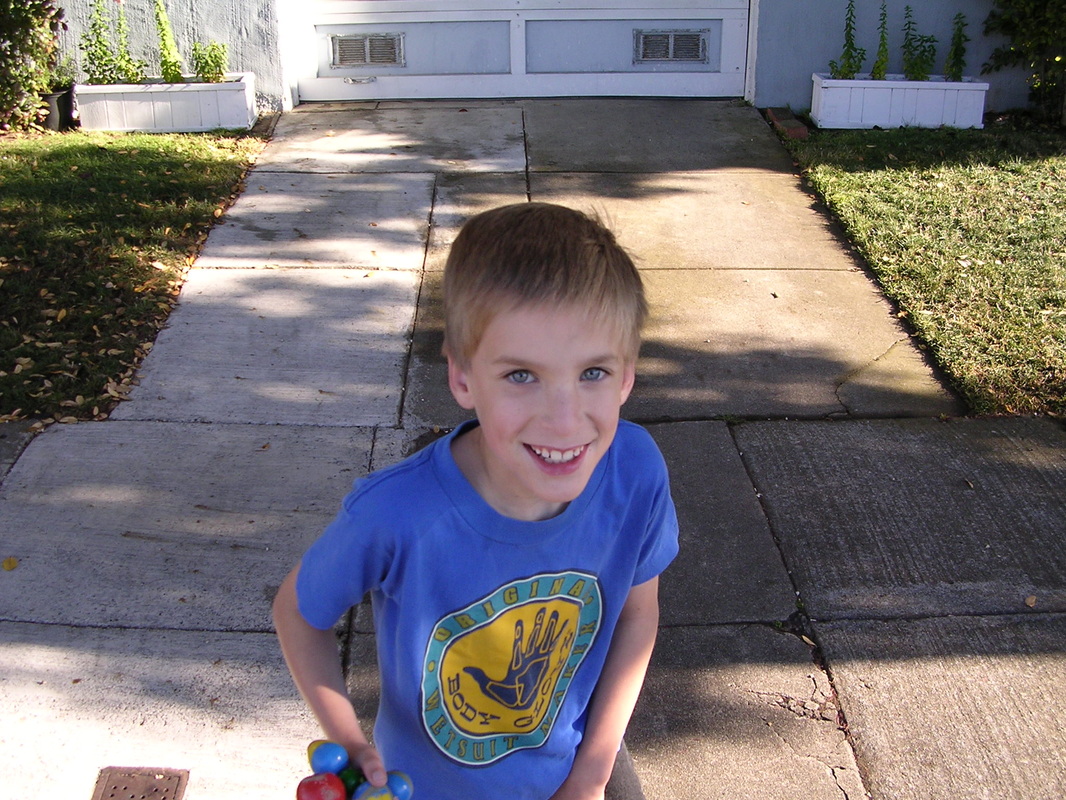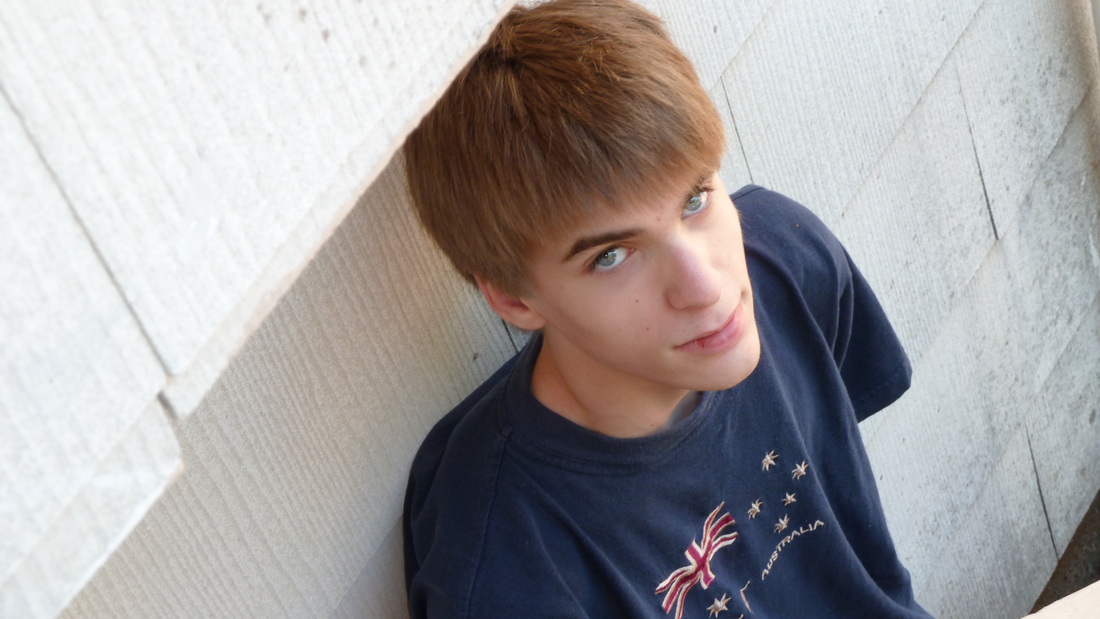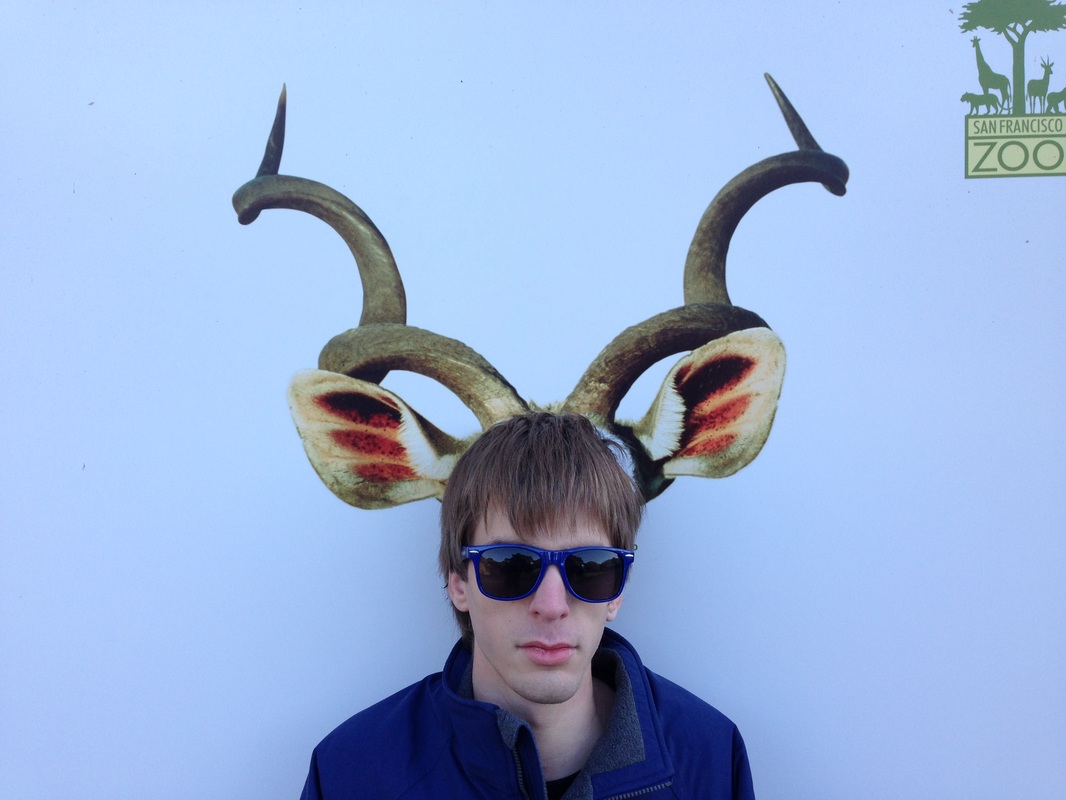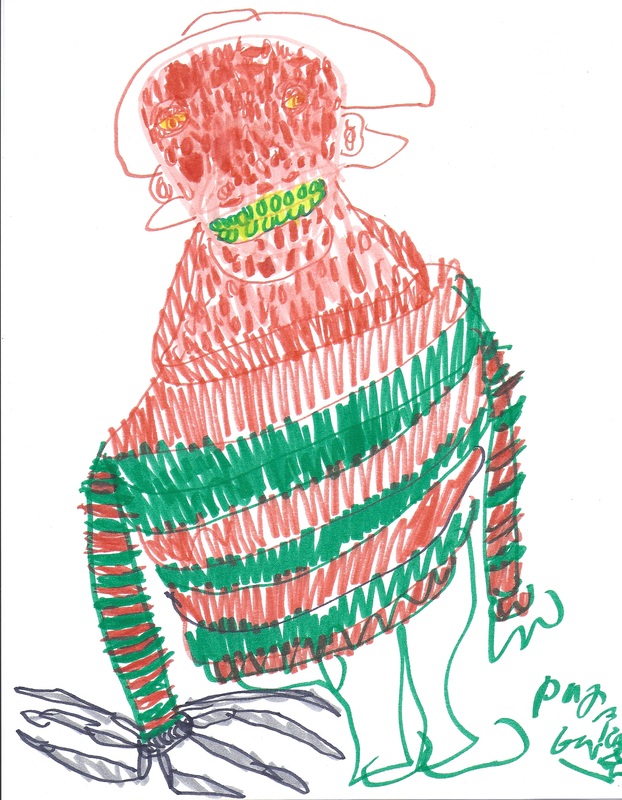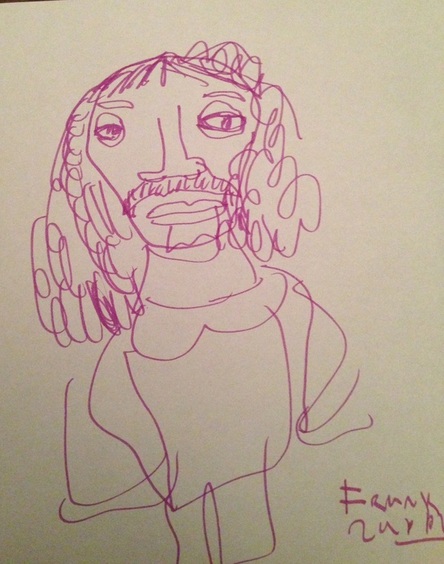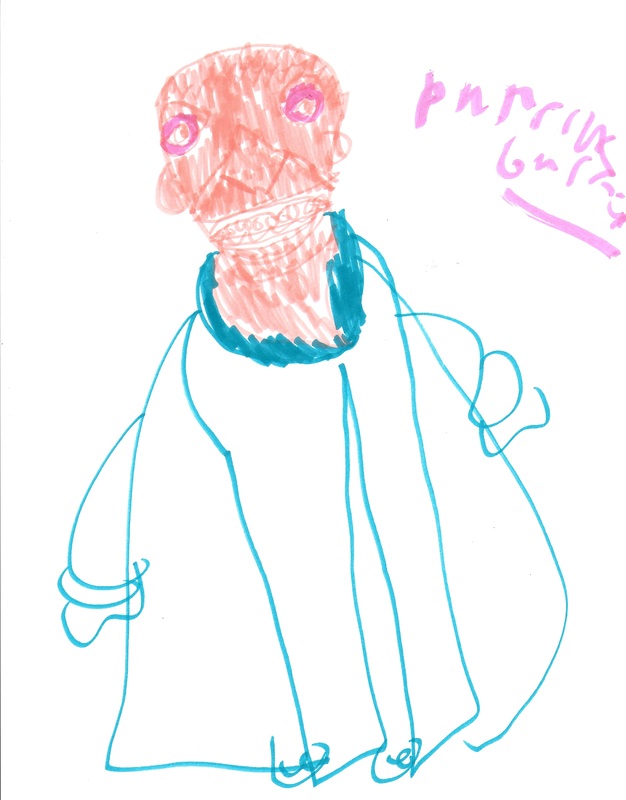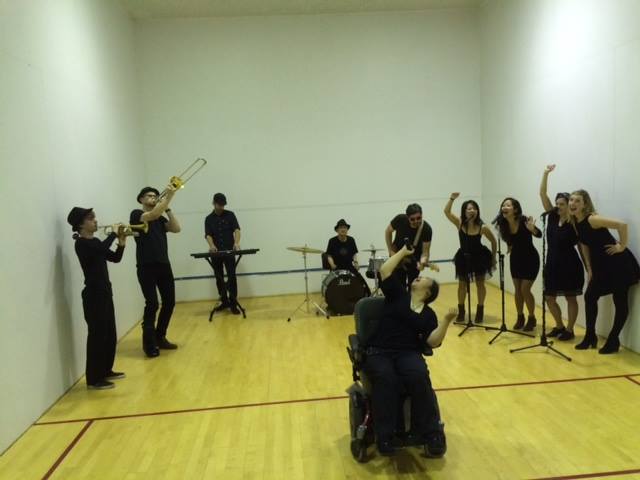n 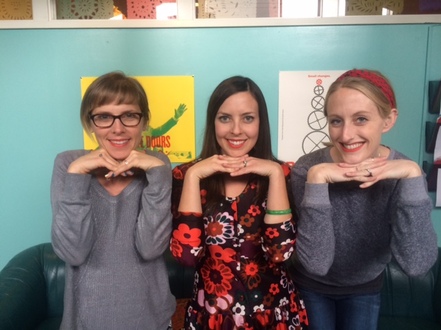 From left to right: Ashley Saks, Heidi Seretan, Jen Kabbabe
From left to right: Ashley Saks, Heidi Seretan, Jen Kabbabe
Patrick Owen Gaiser was born on June 27th, 1993. His due date was October 9th. He was a premie born at 26 weeks and weighed one pound, eleven ounces at birth. He spent the first 110 days of his life in the neonatal intensive care unit of what was then Children’s Hospital in San Francisco. In those first few challenging months Patrick managed to pass each premie hurdle in terms of the proper development of his heart, lungs, and eyes with flying colors. He was released from the hospital in October after his original due date weighing just over five pounds.
Patrick turned 21 last June. He’s a young adult with disabilities, and though very high functioning, he will never drive or take public transportation by himself. He will always live with us or near us. But Patrick is also a remarkable young man who touches everyone who comes into contact with him.
Patrick processes the world through the movies of Disney, Dreamworks, and Pixar. It goes without saying that we—his family—have watched the movies with him countless times and like him have become walking lexicons of all things animated. He constantly refers to the films in everyday conversation flitting from movie to movie making points about various characters’ personalities, habits, and behaviors as well as the seemingly constant theme of protagonist vs. antagonist. Further, he draws–almost compulsively–characters from the movies and his artwork can only be described as one of a kind (see below).
Beyond Disney, there has been another constant in Patrick’s life over the last two decades; his care givers, special education teachers, and paraprofessionals. Beginning with his nurses in neonatal intensive care, a steady progression of the most caring and talented people have been part of his life over the last 21 years. Here are some of the men and women who have been a part of his journey. During this time of Thanksgiving we send them our love, appreciation, and gratitude. They made a huge impact on Patrick’s life–and on our lives as well.
Children’s Hospital: Jacqueline Jessen RN
Day Care: Cindy Hampton
After school: Leslie Zwemmer
Alvarado Elementary School: Darcy Estes and Stacey Cadigan; after school program: Yury Hurtado
A.P. Giannini Middle School: Cindy Sawchuck and Stephen Talsky
Beacon after School Program: David Allen as well as Rena, Cole, and Christine
Mission High School: Tanya Derkash and Rami Aweti
Best Buddies: Paulina Avila Martinez
ARC: Lance Scott
Pomeroy Center: Allen Player and Victor Ha
Teaching has long been called one of the most noble and valuable of all professions. I couldn’t agree more. Unfortunately, teaching as a profession is also for the most part undervalued, under-served, and most of all, underpaid. Beyond mainstream teachers are the individuals who choose to work with kids and adults with disabilities. Special ed teachers are a rare breed with skills far beyond what’s required for mainstream teaching. For them, establishing rapport to successfully communicate with students–always a priority for any teacher—can be an immense challenge as those they teach have challenges ranging from non-verbal to permanent physical impairment. The men and women who teach our kids and adults with disabilities are my heroes. They are truly angels among us.
With Patrick’s current teachers, I’ve saved the best for last. For the past two years he’s been part of a program called Access SFUSD offered through the San Francisco Unified School District at the ARC Center. Access is a unique program offering young adults with disabilities life and vocational experiences using the community as a classroom. It’s the brainchild of program director and special education teacher Heidi Seretan. Working with her are Jen Kabbabe, special education transition teacher, and Ashley Saks, paraprofessional.
Recently I sat down with the three of them because I wanted to know more about the program and about them. What led them to become special ed teachers? How did a unique program like Access come about? How do they teach students with such a wide range of disabilities? Finally, what do they want the world to know about young adults with disabilities? Here is our conversation.
The cast:
· Heidi Seretan, Program Director and Special Education Transition Teacher
· Jen Kabbabe, Special Education Transition Teacher
· Ashley Saks, Paraprofessional
The interview:
TG: How did the Access program start?
Heidi: Access started as a transition program at the Ruth Asawa School of the Arts (SOTA) at the McAteer campus in San Francisco. It’s a program designed to be community based, serving students with disabilities between the ages of 18 and 22. Three years ago in 2012 we moved next to the Arc of San Francisco. We really wanted to have the students somewhere that would be a natural transition for them into the adult world. With the Access program being based here and not on a traditional high school campus we don’t have passing periods, cafeteria-lunch hour, or all those exterior things that can over-stimulate students.
TG: Heidi, where are you from originally and what was your path to becoming a special needs teacher?
Heidi: I’m from Huntington Beach, California. My background is in German linguistics for undergraduate and my master’s degree and special ed credential are in moderate to severe disabilities.
TG: What was the impetus to get that particular graduate degree?
Heidi: When I was in high school my swimming and water polo coach was the teacher for students with very significant multiple disabilities. So when I was a freshman I began as a student aide working with students with disabilities and I really enjoyed it. From there I started at U.C. Irvine where I had a full scholarship for a pre-med degree. But I hated it. I made no friends and I make friends at the airport (laughs). I really didn’t like it. But I liked working with people with disabilities.
TG: Was there someone in your immediate family with special needs?
Heidi: No, nobody in my family or no personal story; it just happened to be that I enjoyed it. It was really fun and a great pay off to see the small successes like seeing students learning to communicate with eye movements. I also got frustrated in high school with people who took things for granted. Students complained about having to run a mile and then I would see other students with disabilities who would do anything just to be able to walk much less run. I saw a genuiness in these students that I didn’t see with the average student. They were the kind of people I wanted to be around at that time.
TG: Ashley, what about you?
Ashley: I’m from Columbia, Maryland. I grew up in the suburbs. My first memory of students with disabilities is from elementary school. I think subconsciously I was really influenced by a program we had called DAP Days—Disability Awareness Program. Once a year, individuals with disabilities came to our school and did workshops with all the students that showcased their abilities. I remember there was a wheelchair basketball team that showed off their skills and they were just amazing.
TG: What about your degrees? What did you study?
Ashley: I have a bachelor’s of fine arts in photography from the University of Miami. After that, I became more interested in the moving image and video, so got a master’s in media arts from the California College of Arts. That’s why I moved here to San Francisco. Through that network, I discovered my love and passion for working with individuals with disabilities. Long story short, a colleague of mine from CCA was starting a media arts class geared towards transition students and he asked me to teach the class. I had no experience working with individuals with disabilities but I really wanted to teach and expand my knowledge. He, another colleague, and I developed a curriculum for a class that taught video and production skills as well as different methods of using technology to learn and communicate. That first semester, we made our first music video and the students were involved with each step of the collaboration. Through that introduction to transition and special education, I discovered my love for working with young adults with disabilities. There were a lot less restrictions working with that age group. We were able to help them express themselves and communicate in different ways that work for each individual. I was able to see them blossom and shine when using technology. They could see themselves instantaneously, learn from their mistakes, and most importantly be proud of their accomplishments. Turns out that my career made a full circle because my Mom was a special ed teacher. I was definitely influenced by her but I didn’t realize it until later on.
After teaching that class it was important for me to continue working with transition students. I was talking to Alyson Furnback who taught the transition students in my media class, and she told me about Heidi and said that she would probably love to bring some of her students to my program. They got on board and it was a huge success. Heidi and I really connected and she encouraged me to pursue this full time by getting a special education teaching credential. So that’s what I’m in the process of doing this year. Hopefully, in May I’ll complete the credential program at SF State.
TG: Jen, your turn.
Jen: I went to a tiny private liberal arts school in Santa Barbara, and entered the world of special ed in a roundabout, un-inspirational way. I used to do a lot of babysitting to get myself through school and help pay the bills. When I graduated I was looking for something more full time. I started working in an elementary school in their after school program because I already had experience working with kids. At the end of the school year I was told that they were not going to have the funding to hire me back next year, and someone at the school recommended that I apply to be a para-professional for students with disabilities because they always needed someone. I didn’t have any experience but I interviewed and got the job. I started working at a middle school in Santa Barbara. On day one I was so blown away by the students and their personalities, their character, and their genuiness, as Heidi put it. They are who they are and they’re not trying to impress anyone. I was attracted to that because part of being at my small private liberal arts school was that everyone was trying to impress everyone else. I was para-professional at that middle school for three years and then started applying for credential programs. I now have my credential in moderate-to-severe disabilities. I’m finishing up my master’s this year if all goes according to plan. I love it and really feel like I’ve found a career for myself.
Jen: Through someone at San Francisco State, Kathy Doering, whom the three of us all know really well. She supervises student teaching at SF State and told me about this amazing transition program. She set me up to do my student teaching here.
Tim: Access in all of Patrick’s academic career is one of a kind. There’s never been anything remotely like it. Is the program unique for the unified school district?
Heidi: Transition programs exist across the country and are federally funded but programs look different in different cities. San Francisco has a good public transportation system and programs here are very community-based whereas in other more remote places you’ll see sheltered workshops or activities only going on in the classroom. But I personally feel that Access is very unique compared to other transition programs.
Ashley: The move off of the high a school campus alone is setting a pathway in helping these young adults become more independent. They’re out in the community more and we partner with adult programs like The Arc instead of being stuck on a high school campus.
Heidi: Our focus here at Access is self-advocacy, self-determination, and increasing independence. The community and jobs become our teachers too. It’s not us just going out and using their sites. The community is our classroom and our motto has become, “San Francisco is our campus.” I think a lot of other programs are less focused on getting students involved in the community and increasing independence. We also really try to work with students’ strengths, hopes, dreams, and goals. We’re constantly expanding the experiences we can provide for them. So we have opportunities for meaningful things in the community as well as experiences in the arts, hobbies, and also ways to self-express.
Jen: I think transition is really unique because it has that flexibility. There’s no federal or state-based curriculum for transition. There aren’t even any research-based curricula for transition so it provides an opportunity for programs like ours to be really creative and have a lot of freedom.
Tim: But then the onus is really on you three to create the curriculum for the program. With that, Patrick always seems to be doing an amazing mix of different things here. What is your vision for the Access curriculum?
Heidi: I think our goal is to create a program that doesn’t exist solely on the fact that we are here. That it will continue on and be strong without us. We don’t want something that’s only successful based on the teachers that implement it.
Ashley: We’re also providing really well-rounded options for students. We’re taking their interests into consideration. But we’re also encouraging them to explore things they haven’t experienced before or that they may not know they’re interested in. For that we’re providing many different types of job experiences and classes in the community. Even on a week to week basis the student choice option gives them the opportunity to go somewhere they’ve never been before or to take a leadership role and take their peers on a tour of their neighborhood.
Heidi: I think we really try to highlight our students. They’re not always able to advocate for themselves as successful, competent, and contributing members of society in the community. So experiences like having them speak at the school board meeting, being on YouTube, and being at the SFMTA meetings (San Francisco Municipal Transportation Agency) makes them more visible in the community. Just by doing that last thing we got all the bus passes for transition students paid for. It really makes a difference because it’s a skill that our students probably wouldn’t gain on their own. But they can do it with support.
Jen: It also makes them really proud and builds up their self-esteem.
Heidi: I think what really helps us is having the students take the lead. At the end of each school year we have all the returning students and their families come together with new students and families and in that way we build a community of respect and a family environment. But I also know that I have a strong, loud personality, and not everyone is going to like 100%-full on Heidi around them. With some students that doesn’t work. But by listening and observing I find what works best. I was a waitress and a bartender for many years and I think that helps me be a strong teacher by playing to students’ strengths and interests. They’re sort of a customer and the question is, what kind of service am I going to give them so they have a happy experience?
We also try to pair students with peers they enjoy being with as well as with the staff of their choice attempting to get as much of their personal choice into their schedule. It comes down to looking for opportunities for students to become leaders, to become highlighted, and celebrate their successes. That builds their confidence and improves relationships all around.
Ashley: I think it’s also about observing and feeling out their comfort level, their communication style, and trying to be as understanding about all that as possible. One thing we do is take students to social events and try to engage them in social opportunities. That might look different for different students. Maybe a quiet student might not be dancing at an ARC dance but they’ll be the photographer. That way they can still be part of that environment but they don’t have to have a chatty, expressive personality. Ultimately I think all of us try to be ourselves as much as possible. We try to maintain a positive energy and it helps to make everyone feel as comfortable as possible no matter what their disability is or their communication style.
Jen: That’s part of the reason I like transition so much–it levels the playing field. I don’t feel like I’m a teacher in a classroom forcing students to do their algebra homework. Instead, I feel like we’re in a place where we can listen to the students and get to know what they like, what they’re interested in, and then shape the program around that. I also think students automatically feel more respected here. They want to have relationships with us because they know they’ll be heard. We listen and try to make a learning experience for them that’s valuable. But it’s different for every student and it does take time. When we show respect to a student they will respect us in turn, or at least that’s the goal. I also believe this is a really safe place for them to learn and have new experiences.
Ashley: It is really interesting when students are coming into our program straight from high school who haven’t necessarily been given the opportunity to make decisions for themselves. We’ll ask if they have a Facebook account and sometimes they’re not allowed to have one at home. But we’re trying to help them understand that they are adults and though they aren’t on Facebook at home, when they’re here at school it’s part of socializing and what others their age are doing. So we help them to make those kinds of decisions for themselves.
Tim: It’s like Patrick learning how to use e-mail.
Heidi: Right and it opens up so much. I get an e-mail from Patrick almost every day and also from Kacey, another student in his class. It’s great to see how much it has increased his socialization and communication with staff and his friends.
Heidi: I say 100% it’s not the students.
Ansley: Definitely not the students.
Jen: It’s my first year full-time teaching, so right now there’s a lot of things that are challenging. But I agree with Ashley and Heidi that it’s not the students. We’re all in this field because we want to work with students who have these types of challenges. We know what we’re getting into. But I think a lot of the administrative stuff is challenging; the communication as well as feeling supported. For the last five days Heidi and I have been trying to get our transportation passes on time and every month it’s an issue. I think a lot of the logistical things are hard – trying to make sure everything is in the right place at the right time and ready to go. Because we’re in the community dealing with ten different job sites and six different volunteer sites, there’s a lot of collaboration going on. We have ten total staff right now with eight paras so there has to be a lot of communication making sure that everyone understands what students should be doing and working on, as well as collaborating with the families. For me that’s the most energy-draining thing—making sure all those things are in place. But it’s also necessary for having a good, well-structured program.
Ashley: It’s hard to see students struggle. Ultimately we’re here to support them but when students are having a hard time communicating their frustration it’s difficult. I think it’s important to establish with them–and ourselves–that every day is a new day. Just because you had a hard day or something didn’t go right for you today doesn’t mean that tomorrow is going to be the same. Also that none of us will take anything personally. I think about that a lot; even if someone had a hard day, tomorrow’s a new day and we’re here to help them.
Jen: It’s also hard for me to see students who really excel here, but knowing that those opportunities might not be available to them after they leave our program. It’s difficult to see students whose family life is not really set up to help them socially or financially.
Heidi: For me one of the most challenging things about moving away from a high school site is that we don’t have as many structural supports whether it be a security guard or office staff. Last year we had six staff turnover and sometimes we had three staff out on a day with no substitutes. Or one substitute would come and not know anything about our program. It’s really hard to give quality instruction to our students when there’s no consistency. Because we have an array of nine or ten job sites that means there’s one person per site. So if more than one staff are out then we don’t have enough people to take students out to their community sites and it throws everyone’s schedule off.
There’s also consistency of administration. In the six years I’ve been in transition we’ve had four different supervisors of secondary special education. You take so much time explaining your program to someone and they finally become invested but then they’re gone. We have a new person now and none of us has met her. It’s like constantly starting over from scratch having to constantly explain what transition is and to validate that we’re here and what we’re doing is worth it. I don’t like to be the person who’s the exception to the rule but transition really is just that. We don’t follow state standards. And though we do data tracking through IEP goals (Individualized Education Program), we don’t have math standards to adhere to or things like that.
I think for other transition teachers trying to find a way to be part of the community is a challenge. We’re very fortunate in that we’ve created our own identity here at Access with our own logo. I feel like I’m part of something. I think that’s where a lot of transition programs struggle. But we’ve struggled as well just in advocating what we need while also being resourceful. All our furniture is hand-me-down from the ARC. It’s interesting that Ashley comes from the non-profit world where they have a budget and can get reimbursed for things. That doesn’t exist for public schools. So we have to be creative in doing that like the coffee cart program that Patrick was part of at the MUNI office. That made us a bit of money that we could then use to create a claymation class or buy some props for a dance video.
All three: The students!
Jen: I love being with students at lunch, chatting with them, and finding out what they do in their free time. I also love the goofy things they do and their quirky personalities; seeing them come out of their shells and be really successful and finding passions, things they love, and making relationships with each other. We see them become adults here. They come in from high school and they’re really quiet, shy, and keep to themselves. By the time they leave here they’ve become these really huge personalities and they’re well-rounded, amazing people. It’s great to see that transformation.
Ashley: They’re not only learning from us but they’re learning from each other. We can be ourselves with the students and they can be themselves with us; it’s just a really powerful place to work.
Heidi: A lot of my favorite things have to do with bridging the gap. I feel that transition is so unique. We’re not just teachers, we’re case managers and helping to bridge the transition from public school to adult life. That’s unique compared to any other teaching job. We’re able to be closer to families than a regular fifth grade teacher could ever be. We’re also able to be much more invested as part of the IEP team. Transition is the first time that IEP feels like a team and not just teacher, family, student. But I think my favorite things are seeing the students grow socially outside of school and discovering who they are; things like going to dinner, going to plays, and the ARC dances. Also in seeing the students having proud moments like speaking at San Francisco State or in front of the school board of directors meeting; seeing them do something they didn’t think they could do.
Tim: Where do you see your careers taking you in the future?
Jen: I feel like this is a very new career for me so I plan on staying for as long as I can. It’s hard for me to imagine teaching outside of San Francisco now that I’ve taught here. Our program is so ingrained in the city and the community that for me to go to some isolated school in a suburb would feel very boring. I really like being in San Francisco and think this is a great place, where students have a lot of opportunities. I definitely would like to continue teaching here for as long as I can. From there we’ll see where it takes me.
Ashley: I love working with transition students; I love seeing them grow and blossom and be able to express themselves through performance, dance, music and all the creative arts. I’m hoping to expand my media arts curriculum and to be able to work with more programs around San Francisco. I think Access is the ultimate school and community to be a part of; it’s a pilot for the successes that could be happening in other schools and programs. I’m not sure if that would mean a partnership with Access and other programs or if it would be an inclusive media experience for more schools and other non-profits. But I definitely want to continue to work with special ed and hope this curriculum can reach out to more young adults.
Heidi: Your question is something I’ve been toying/struggling with over the last two years. I firmly believe that people should never go into administration or teaching people how to teach unless they have a firm foundation as a teacher. In the past couple of years I’ve thought a lot about going back to get a PhD or going to an administrative program. But then I think about what gives me the most joy and it’s the students. I think it’s a shame when someone’s doing really well and the general thought is, “what’s next?”
I feel really happy where I’m at right now while I’m doing the Master Teacher program through San Francisco Unified providing me with some additional funding to some creative projects in creating district-wide transition materials. Jen is one of the teachers on my team and we’re working on getting things vetted by the legal department so all the transition programs will have a common syllabus and everyone will have access to the same things. My goal in the next four years is to really be a part of strengthening transition district-wide. Next year we have two openings in our program and we’ve already had four families visit and have three more scheduled. That’s a lot of people we don’t say no to but placement does. I think it’s a good thing we have all this interest because it shows the district that people want these experiences for their sons and daughters that aren’t in a high school setting. They want the Access-type experience. I hope to be part of that process in making more and more transition programs community-based.
Heidi: I want people to take the time to get to get to know our students and find ways to have them become more involved in their community–whether it be at their job site or being active with our Access community.
Ashley: I would also want readers to understand that all behaviors are meant to communicate something. Our students may need some extra help interpreting what it is they are trying to communicate. This might take extra thought and time. Things may not necessarily be how they appear on the outside. All individuals have strengths and feelings that should be valued. Hopefully we can all take the time to discover what those strengths and talents are. Everyone has the right to have meaningful experiences, no matter who we are or where we come from. That’s what we try to provide here at Access—meaningful experiences for everyone.
Jen: Along the same line, just to know that these individuals are complete people. They’re not just people with disabilities, but they’re complex human beings and they have experiences and stories, likes and dislikes, and strengths and weaknesses. Don’t put them in a box or look at them with a label, but explore them as a person–value them as a whole person that has a lot to offer and a lot to contribute. They might need a bit of support to find their right place in the world, but they’re incredible people that are worth spending the time to get to know.
Heidi: Jen said it really well; seeing the person and not their disability. We always do things to show that we have much more in common than we’re different. I think that’s really important for people to know; that you have more in common with these people than differences. But also knowing that there is so much potential in all these students to be involved in the community. How do we bridge that gap? There’s an amazing quote from Ike Kwon, the human resources director for the Academy of Sciences. He said that, “To connect with our community we have to reflect our community.” I think that’s well said; that this is not our community and then here are people with disabilities—we’re all part of the same community.
Tim: Thank you for everything you do. You three are rock stars.
For more information about the Access program look for Access SFUSD on Facebook
nn
